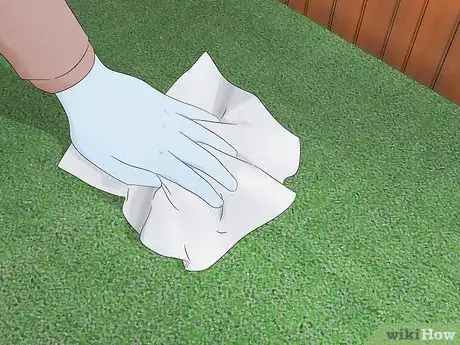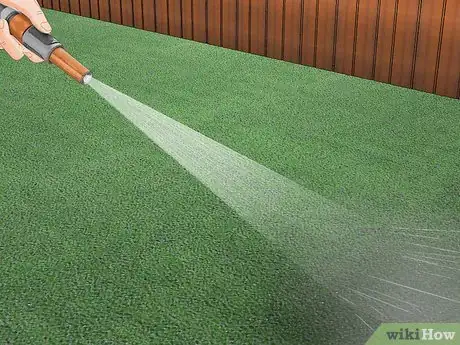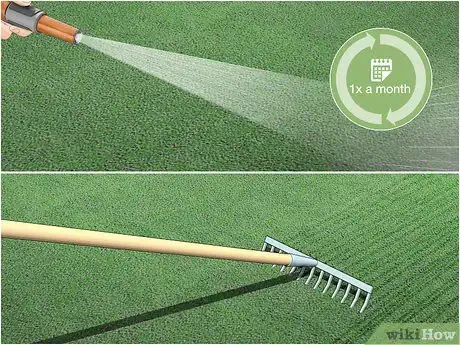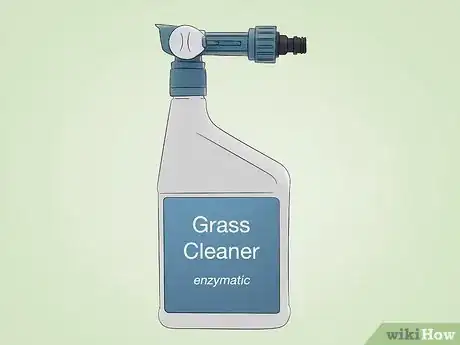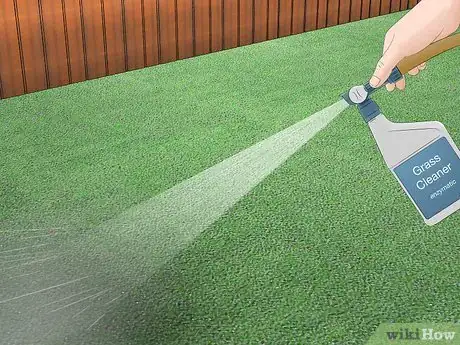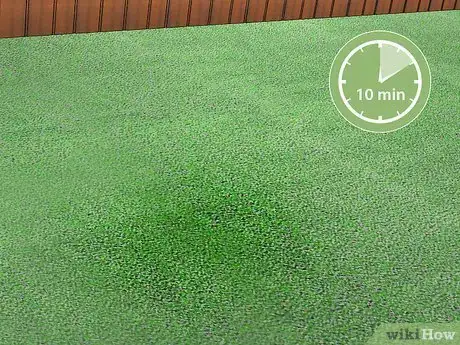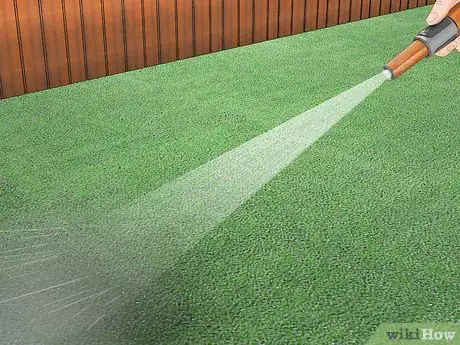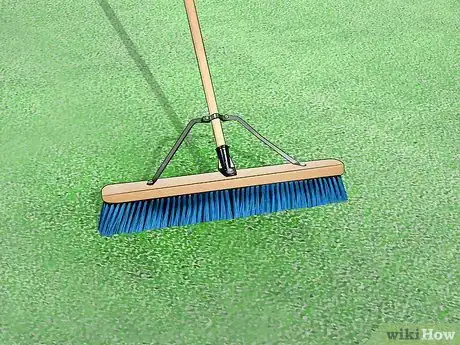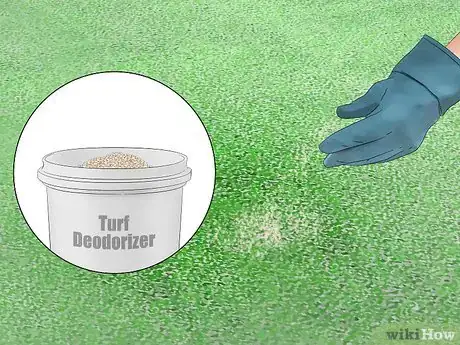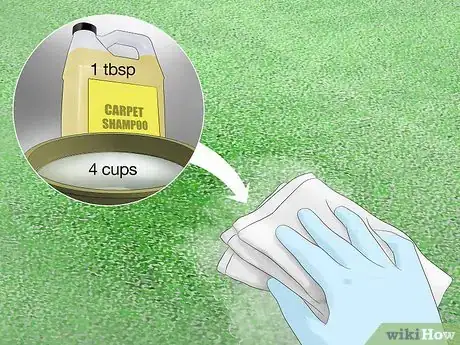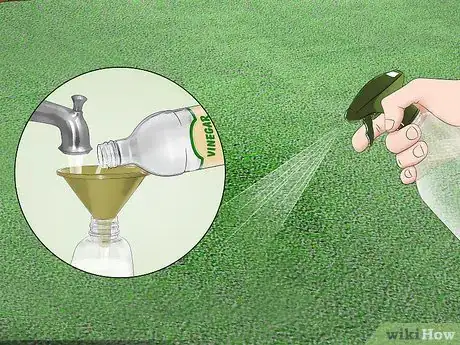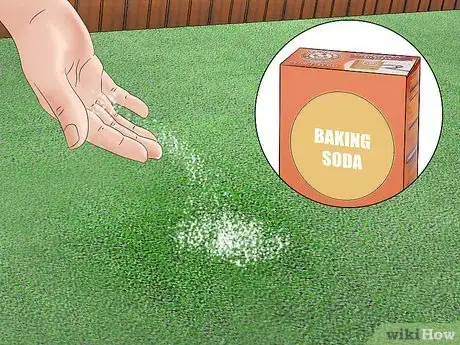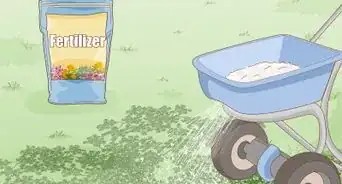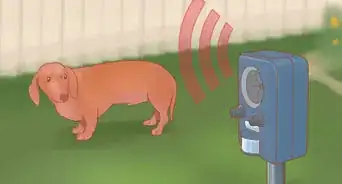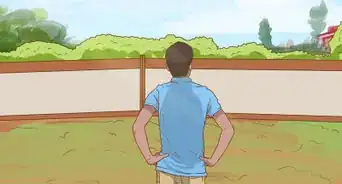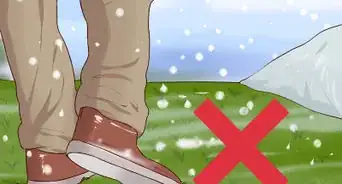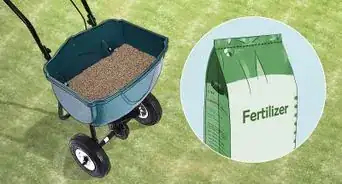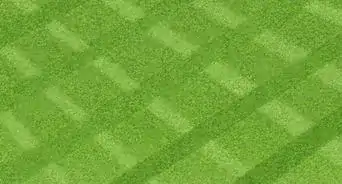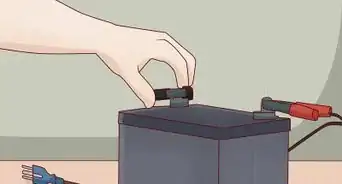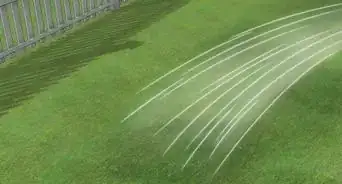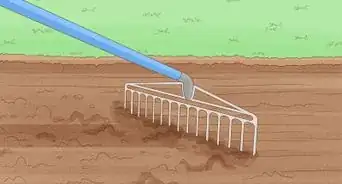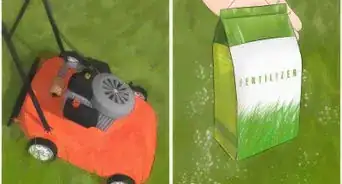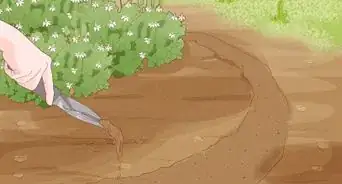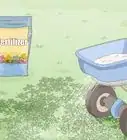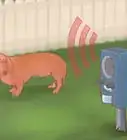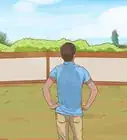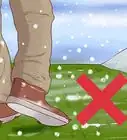This article was co-authored by Regina DeCorte. Regina DeCorte is a Residential Cleaning Specialist and is the Founder of Maid in JC, a home cleaning service based in downtown Jersey City, NJ. With more than eight years of experience, she specializes in cleaning apartments, condos, and townhomes using natural products. Regina and her staff are fully bonded and insured.
There are 8 references cited in this article, which can be found at the bottom of the page.
This article has been viewed 69,007 times.
Artificial grass is simple to maintain, doesn’t require trimming, and, most of all, is easy to clean. Many people, including pet owners, prefer it to the real thing. However, dog urine can leave stains and an unpleasant odor on the grass over time. To prevent this from happening, rinse the grass with water at least once a month. Commercial grass cleaners and deodorizers are a big help if you’re stuck with a smell you can’t eliminate by water alone. You could also use household products like vinegar and baking soda to keep turf clean. With proper maintenance, you won’t even be able to tell that your dog went on the grass!
Steps
Performing Routine Cleaning
-
1Mop up the urine with paper towels as soon as you notice it. Prevent the urine from soaking down into the turf. If you’re aware of when your pet goes on the grass, you can take care of a large part of the issue before it stains the grass or causes it to smell. Soak up as much of it as you can.[1]
- You probably won’t be able to soak up all urine this way, but that isn’t a problem. Artificial grass is designed so that liquids drain through it like they do on normal grass.
- Even if you don't bother soaking up the urine, you can still get turf fresh and clean later. Soaking it up minimizes stains and smells before they settle in.
-
2Hose down the grass with clean water. Spray the grass down with cold water, paying particular attention to any spots your dog uses as a bathroom. The water will flush out any urine left on the grass and dilute its smell. You can do this right after your pet goes to ensure that the urine doesn’t have time to soak in.[2]
- You don’t have to pick up the hose every time your pet goes on the grass, but more frequent cleanings mean less mess and fewer odors.
- You could also rake the grass to remove solid debris like leaves. Raking stands the grass blades up, which makes the lawn look neat, but also encourages liquids to drain more efficiently.
Advertisement -
3Spray the grass clean at least once a month. Set aside time to maintain your lawn by giving it a thorough cleaning. Pick up any solid debris, then rake the grass clean. Follow up with a thorough soaking from the hose. This will ensure that pet urine never has a chance to soak into the grass blades.[3]
- If you have more than one dog using the lawn, clean the grass more often to prevent urine from becoming a problem. Try spraying it down at least twice a month to prevent urine build-up.
- If you are able to, clean the grass once a week. Frequent cleanings ensure that the grass looks and smells clean.
Applying Commercial Cleaners
-
1Select a grass cleaner that is effective at neutralizing urine. Grass cleaners work on artificial turf as well. There are lots of products out there, so get an enzyme-based cleaner. It is usually labeled as “enzymatic” or is advertised to take care of pet odors. The enzyme in such cleaners is what breaks up what is left on the grass as the urine dries.[4]
- Since you’re applying the cleaner in an area your dog uses, get a natural or green cleaner. Natural cleaners are still effective on urine but don’t have any chemicals that could harm your pet.
- Most grass cleaners come in spray bottles with a built-in hose attachment. These products are much easier to use, so get one if it is available.
- You can find grass cleaners online and at most hardware stores with lawn care sections.
-
2Spray the cleaner onto the grass with a hose at least once a month. If your bottle has a built-in hose adapter, plug a garden hose into it. Fit the other end of the hose onto the nearest water spigot on your home. Turn on the water, then begin spraying the cleaner onto the areas stained with urine. The adapter mixes the cleaner with water, so all you have to do is point the sprayer and pull the trigger.[5]
- If you’re using a cleaner without a built-in adapter, mix it into water to activate it. Check the manufacturer’s instructions for more information.
- If the cleaner isn’t in a spray bottle, use a hand pump sprayer instead. Load the sprayer, then work the pump. When the pump becomes difficult to move, point the sprayer nozzle at the grass and pull the trigger to start cleaning it.
-
3Let the cleaner absorb into the grass for 10 minutes. Over time, the cleaner activates and works its way into the grass. It breaks down any urine left over, draining it out through the turf. Keep a close eye on the cleaner to ensure it doesn’t dry out before then. Check your lawn afterward for any lingering stains or smells.[6]
- The best time to apply the cleaner is during a cooler time of day, such as at dusk or dawn. If you’re applying it during a warmer period, be sure to keep the grass damp.
- Cleaners drain through the grass like other liquids do. You don’t have to pick it up and, if it’s organic, you don’t have to worry about it harming anything.
-
4Mist the cleaner with cool water if it dries out too rapidly. The cleaner has to be wet in order to be effective. If you’re using it during a really hot day, it might dry out before it has set in for the full 10 minutes. Get your hose or a spray bottle and lightly water the grass. As long as it is damp, the cleaner will continue breaking down any urine present.[7]
- Be careful to avoid adding too much water. If you soak the grass, you could flush out the cleaner before it has had a chance to dissolve all of the urine.
- If you live in a warm area, always be prepared to mist the cleaner after using it. Sometimes using the cleaner on a hot day is unavoidable, but you can still make it work.
-
5Scrub the grass with a stiff-bristled broom to tackle stubborn stains. Apply some of the cleaner, then scrub any areas that have urine stains or smells you can’t get rid of any other way. Let the cleaner work for 10 minutes afterward. Keep it damp by misting it as needed until then.[8]
- You could also use a handheld brush, but it takes more work. A good broom is the easiest way to scrub your lawn clean.
- For stains that just won’t go away, apply cleaner repeatedly, scrubbing each time. Eventually, it will wear down the urine, but it can take several applications.
-
6Sprinkle a turf deodorizer on the lawn if it still smells like urine after cleaning. Turf deodorizers neutralize lingering odors and are usually sold in powder form. Select a natural deodorizer so that it won’t harm your dog. Apply it to any areas where you smell urine, then wait. The deodorizer will take care of the smell as it breaks down on its own.[9]
- The deodorizer doesn’t have to be cleaned up afterward. Let it disintegrate into the grass.
- Most turf cleaners also function as deodorizers, so you won’t always need a separate deodorizing product.
- For an easy way to spread deodorizer over a large area, rent a device called a drop spreader from your local hardware store. When you push the spreader over the grass, it lets out a steady stream of the deodorizer.
Using Household Cleaning Products
-
1Wash the grass with soap and water once a month to eliminate minor stains. Mix a mild, neutral soap into warm water. Dish detergents work, but laundry detergents and carpet cleaners are better. Try combining about 1 tablespoon (15 mL) of soap for every 4 cups (950 mL) of water you’re using. Then, spray the grass with the soapy water or apply it by hand. Rinse it afterward to clear off the soap.[10]
- When choosing a dish detergent, get a neutral one, which means it isn’t acidic. Neutral detergents are labeled. Avoid industrial-strength cleaners or ones that are tough on grease.
- To make this more effective, use a soft-bristled scrub brush or a rough rag to work the soapy water into stained or smelly spots.
- Soapy water works best for spot-treating turf kept indoors, but it can also be effective outdoors as well.
-
2Spray the grass with diluted vinegar once a month to cover odors. Mix equal amounts of water and distilled white vinegar in a spray bottle. Then, mist any areas with urine stains or odors. Vinegar is a very safe and effective cleaner, but it leaves behind its own strong smell. Rinse off the vinegar afterward to remove it.[11]
- To spread the vinegar more easily, use a hose-end sprayer. It screws onto the end of a garden hose. Then, put the vinegar in the sprayer to mix it with water and distribute it onto the grass.
- To deal with the vinegar smell, rinse the grass thoroughly a few times or sprinkle baking soda onto it. You could also make the cleaner with less vinegar.
-
3Sprinkle baking soda onto the grass once a month for a natural deodorizer. Baking soda is great at neutralizing odors and even pulling moisture out of artificial grass. Cover stained and smelly parts of the grass with plenty of baking soda and let it sit there for a while. Wait at least a day. Since baking soda is environmentally-friendly, you don’t have to clean it up, but you can sweep it up if you want to.[12]
- A combination of baking soda, hydrogen peroxide, and a few drops of dishwashing liquid can be used to remove odors from artificial grass.
- Another option is to add the baking soda, then pour a vinegar and water mixture over it. The baking soda and vinegar will fizz when they come into contact, eliminating any odors.
Things You’ll Need
Performing Routine Cleaning
- Paper towels
- Garden hose
- Water
Applying Commercial Cleaners
- Enzymatic grass cleaner
- Hose
- Water
- Stiff-bristled broom or brush
- Turf deodorizer
- Hose-end sprayer (optional)
Using Household Cleaning Products
- Spray bottle or hose-end sprayer
- Mild, neutral dish detergent
- Distilled white vinegar
- Baking soda
References
- ↑ https://www.popularmechanics.com/home/how-to-plans/how-to/a23626/how-to-lay-artificial-grass/
- ↑ https://www.popularmechanics.com/home/how-to-plans/how-to/a23626/how-to-lay-artificial-grass/
- ↑ https://www.thisoldhouse.com/ideas/411-artificial-turf
- ↑ https://www.thisoldhouse.com/ideas/411-artificial-turf
- ↑ https://www.thisoldhouse.com/ideas/411-artificial-turf
- ↑ https://www.youtube.com/watch?v=OBo4T534Kkw&feature=youtu.be&t=150
- ↑ https://www.youtube.com/watch?v=OBo4T534Kkw&feature=youtu.be&t=127
- ↑ https://www.youtube.com/watch?v=XUxk2aUzng4&feature=youtu.be&t=47
- ↑ https://www.youtube.com/watch?v=xEnOsVXAC-Y&feature=youtu.be&t=16
